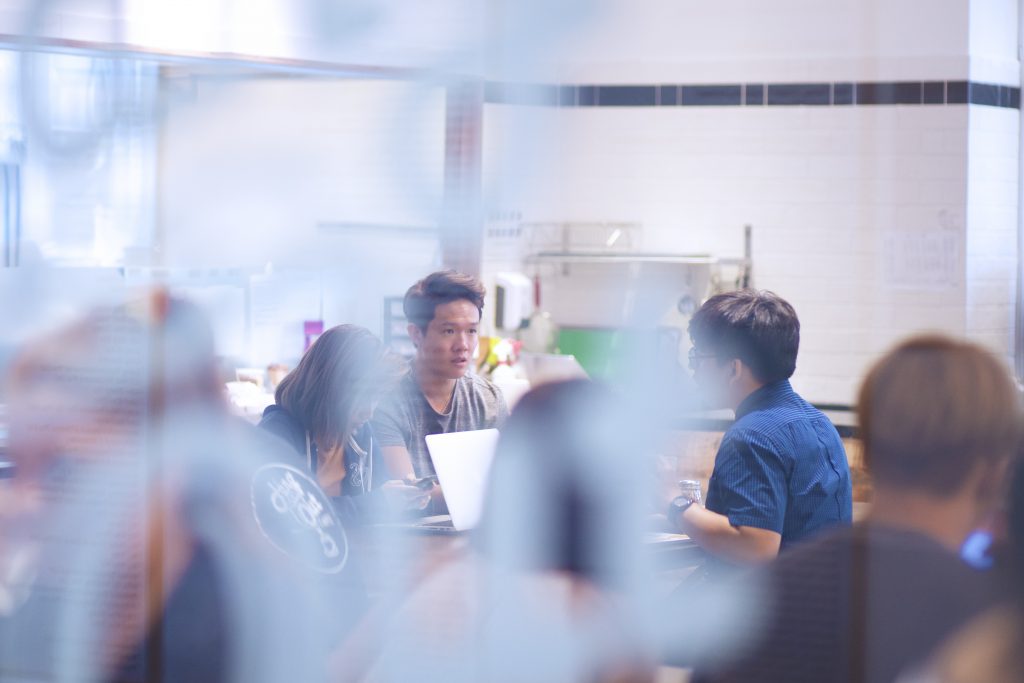
Product distribution, or sampling, is a tried-and-true campus marketing tactic that still has klout with brands who run marketing campaigns on college campuses. Product sampling can be a very successful tactic, but you need to approach it strategically. Here are a few helpful tips approach to run a successful product sampling campaign on campus.
HIT ‘REFRESH’
Typical sampling today often relies on random distribution. In the past, it’s been done with flyers or a variety of products. But the right way to do product distribution isn’t through a guerrilla tactic of randomly handing out samples, but to be strategic.
The traditional old way of sampling involves requiring student brand ambassadors to hand out flyers on campus. Over time, students have become very desensitized to receiving pamphlets or some other kind of information, and they ignore the messaging. While some people will take the flyers and your impressions of viewing may be high, their actions as a result will be very low. Remember, a successful product distribution campaign is based on a change in buying behavior, not on the number of samples that are handed out.
Be sure to tie product distribution to a relevant KPI. Rather than arbitrarily distributing $8 t-shirts and hoping they win you new customers, include a call to action with the product you give away. Additionally, establish an area or footprint on the campus that allows you to collect valuable information.
INCREASE BRAND AWARENESS
You can do product sampling purely for brand awareness by distributing samples to as many people as possible. But that kind of tactic has limited value, and it’s incredibly hard to evaluate, because you can’t effectively measure awareness with such a large sample size.
Some brands expect to gauge awareness by surveying people before and after the sampling. But when you hit 200 people on a campus of 40,000 students, your chances of surveying the same 200 before and after the sampling are almost zero.
NEVER GIVE AWAY SAMPLES FOR FREE
Always get something in return for your samples—whether it’s personal information, a desired action (like buying), or market data. When you measure data, make sure you’re tracking relevant data that’s tied to the right KPIs. You can also collect information that lets you continue the conversation—whether it’s a strategic drip email campaign or a social follow campaign, or a retargeting campaign.
If you collect information, remember to consider the friction vs. decision component that’s at play. Only distribute items that are usable or valuable to the students you’re trying to reach. If there isn’t much interest in the product, then the friction of giving out personal information like an email address will be too great and they won’t be interested. Additionally, consider your cost per acquisition when you choose the samples to distribute. Make sure you don’t lose money by spending more on the samples than you receive from a new customer!
CASE STUDY: DEAN’S DIP
One of our clients, Dean’s Dip, ran a terrific sampling campaign. They let people come to a location and try their product. We gave out a pamphlet that told consumers where they could buy the product near them, and we gave them a coupon for the product. The coupon had a code on it, which we used for tracking the success of the campaign. So Dean’s gave out samples as well as a lot of information so consumers could make an educated decision—there was a lot of high-value distribution with very little friction.
We ran the sampling campaign at a time and location, and with an audience, that resonated well with the product. We focused on football games, specifically tailgates, because dip goes great with football. We set up shop at tailgate parties, on campus, and at housing complexes that hosted football-themed events on game day.
Our goal was to get a 3% redemption rate on the coupon over the course of the campaign, and we saw an 8% return. In this case, we collected information, but it wasn’t personal information—we were able to measure the effectiveness of the program, and because we saw almost a 3x return on the client’s request, we knew it was a very successful campaign.
NEXT STEPS
- Discover more great marketing content—subscribe to our blog
- Follow us on Twitter, Facebook, and LinkedIn
- Find out how Go Commando can help you run a successful sampling campaign


